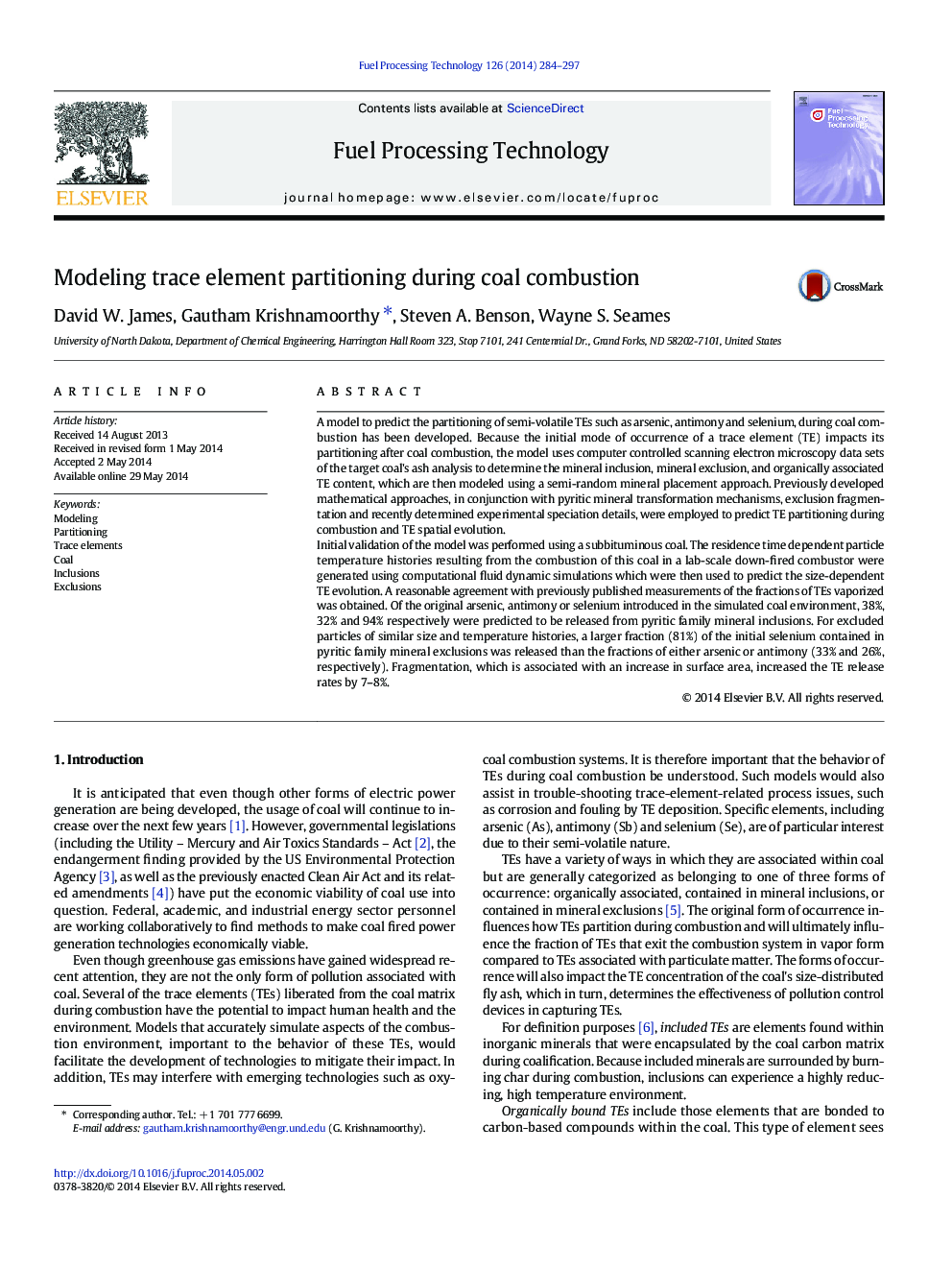| Article ID | Journal | Published Year | Pages | File Type |
|---|---|---|---|---|
| 209727 | Fuel Processing Technology | 2014 | 14 Pages |
•A model describing trace element vaporization during coal combustion is described.•CCSEM, a semi-random mineral placement approach and CFD were employed as inputs.•38%, 32%, and 94% of As, Sb, and Se, respectively, from inclusions were released.•33%, 26%, and 81% of As, Sb, and Se, respectively, from exclusions were released.•Fragmentation increased the trace element release rates by 7–8%.
A model to predict the partitioning of semi-volatile TEs such as arsenic, antimony and selenium, during coal combustion has been developed. Because the initial mode of occurrence of a trace element (TE) impacts its partitioning after coal combustion, the model uses computer controlled scanning electron microscopy data sets of the target coal's ash analysis to determine the mineral inclusion, mineral exclusion, and organically associated TE content, which are then modeled using a semi-random mineral placement approach. Previously developed mathematical approaches, in conjunction with pyritic mineral transformation mechanisms, exclusion fragmentation and recently determined experimental speciation details, were employed to predict TE partitioning during combustion and TE spatial evolution.Initial validation of the model was performed using a subbituminous coal. The residence time dependent particle temperature histories resulting from the combustion of this coal in a lab-scale down-fired combustor were generated using computational fluid dynamic simulations which were then used to predict the size-dependent TE evolution. A reasonable agreement with previously published measurements of the fractions of TEs vaporized was obtained. Of the original arsenic, antimony or selenium introduced in the simulated coal environment, 38%, 32% and 94% respectively were predicted to be released from pyritic family mineral inclusions. For excluded particles of similar size and temperature histories, a larger fraction (81%) of the initial selenium contained in pyritic family mineral exclusions was released than the fractions of either arsenic or antimony (33% and 26%, respectively). Fragmentation, which is associated with an increase in surface area, increased the TE release rates by 7–8%.
